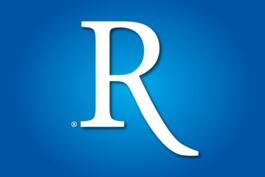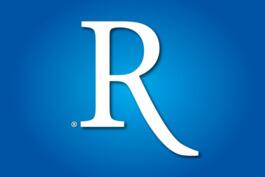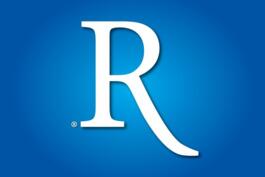Not Such a Hot Idea: Liberal and Conservative Parties
A Commentary By Michael Barone
"More tears are shed over answered prayers," the 16th century nun St. Teresa of Avila is supposed to have said, "than over unanswered ones."
So it may be appropriate to shed a tear for two or three generations of American political scientists whose prayers have been answered -- in a way that most political scientists today regret.
The prayers of the political scientists in the 1940s, 1950s and into the 1960s was that our party system would evolve into one with one clearly liberal party and one clearly conservative party.
This was a common enough argument at the time. The Gallup poll used to periodically ask voters if this was a good idea, and about half of them thought it was.
The political scientists had a point. In the wake of Franklin Roosevelt's New Deal, American politics seemed horribly scrambled.
The Republican Party had its progressives and liberals who wanted to accept the New Deal. Indeed, in the 1930s some of the strongest advocates of big government programs were Republican Sens. Bronson Cutting and George Norris and New York Mayor Fiorello LaGuardia (who was once elected to Congress on the Republican and Socialist tickets).
But there were also plenty of conservatives who detested the New Deal, like Sen. Robert Taft ("Mr. Republican") and Col. Robert McCormick, proprietor of the Chicago Tribune, then the largest circulation broadsheet newspaper in the country.
New York-based lawyers and media tycoons nominated relatively liberal Republican presidential candidates like Wendell Willkie, Thomas Dewey and Dwight Eisenhower, amid much teeth-gnashing by conservatives.
The Democrats were, if anything, even more deeply split. White Southerners who remembered the Civil War wanted nothing to do with the party of Lincoln. They accepted New Deal farm programs that were carefully crafted to exclude blacks from benefits.
Northern liberal Democrats backed civil rights, but Roosevelt refused to endorse a federal anti-lynching law. Interestingly, the New Dealers most strongly for black rights were former Republicans -- Vice President Henry Wallace, Interior Secretary Harold Ickes and first lady Eleanor Roosevelt.
Many big-city machine Democrats were leery of unions and direct federal benefits. They wanted to hand out the goodies themselves.
And many Democrats, North and South, believed in Jeffersonian small government and opposed crony capitalism in the tradition of the party's founder, Andrew Jackson.
All this left political scientists in a rage. How could voters make rational choices when the parties presented no coherent set of policies? Wouldn't it be more democratic to have one liberal and one conservative party?
Most though not all political scientists in those days were liberal Democrats, and most of them had little doubt which ideological party would prevail most of the time. It would be a liberal Democratic Party, purged of its Jeffersonian conservatives (FDR tried this in the 1938 off-year elections) and with its Southern conservatives submitting to party discipline in the House and Senate.
The Republicans would be left with all the conservatives and thus be consigned to defeat most of the time.
Well, their prayers have been answered. Today, we have a solidly liberal Democratic Party and a solidly conservative Republican Party. The voters get to make a rational choice between two pretty clearly defined alternatives.
Party leaders in Congress exert impressive discipline over their colleagues. Senate Democrats got all 60 Democrats to vote for Obamacare despite negative polls. Republican Speaker John Boehner got almost all House Republicans to back Paul Ryan's budgets.
The two parties compete vigorously and on close to even terms. A Republican president was re-elected with 51 percent of the vote in 2004; a Democratic president re-elected with 51 percent in 2012.
And almost all voters vote straight tickets. Clark Bensen of Polidata has crunched the presidential results by congressional district for National Journal and the Almanac of American Politics.
In 2012, only 17 Republican House members were elected in districts carried by Barack Obama. Only nine Democratic House members were elected in districts carried by Mitt Romney.
That has given us divided government because of political geography. Obama's big margins in central city neighborhoods where Democrats cluster gave him 332 electoral votes.
But he carried only 209 congressional districts. Mitt Romney, with Republican voters more evenly spread out, carried 226.
So now political scientists lament gridlock and polarization and partisanship and reminisce about those (mostly mythical) days when politicians of both parties got along.
St. Teresa had a point.
Michael Barone, senior political analyst for The Washington Examiner (www.washingtonexaminer.com), is a resident fellow at the American Enterprise Institute, a Fox News Channel contributor and a co-author of The Almanac of American Politics.
COPYRIGHT 2013 THE WASHINGTON EXAMINER
DISTRIBUTED BY CREATORS.COM
See Other Political Commentaries.
See Other Commentaries by Michael Barone.
Views expressed in this column are those of the author, not those of Rasmussen Reports. Comments about this content should be directed to the author or syndicate.
Rasmussen Reports is a media company specializing in the collection, publication and distribution of public opinion information.
We conduct public opinion polls on a variety of topics to inform our audience on events in the news and other topics of interest. To ensure editorial control and independence, we pay for the polls ourselves and generate revenue through the sale of subscriptions, sponsorships, and advertising. Nightly polling on politics, business and lifestyle topics provides the content to update the Rasmussen Reports web site many times each day. If it's in the news, it's in our polls. Additionally, the data drives a daily update newsletter and various media outlets across the country.
Some information, including the Rasmussen Reports daily Presidential Tracking Poll and commentaries are available for free to the general public. Subscriptions are available for $4.95 a month or 34.95 a year that provide subscribers with exclusive access to more than 20 stories per week on upcoming elections, consumer confidence, and issues that affect us all. For those who are really into the numbers, Platinum Members can review demographic crosstabs and a full history of our data.
To learn more about our methodology, click here.



